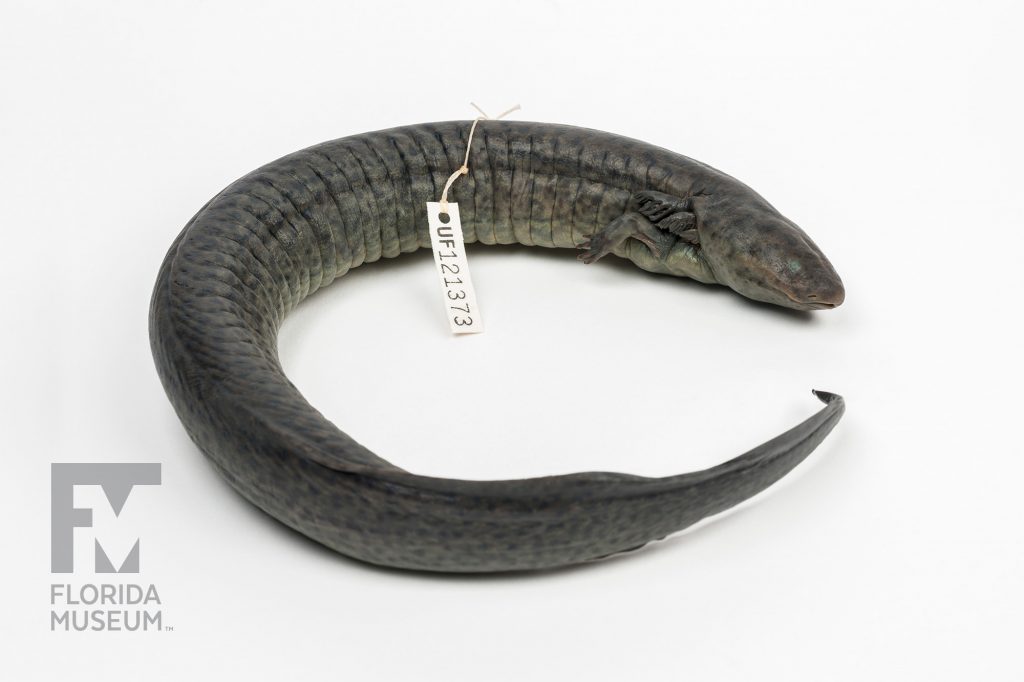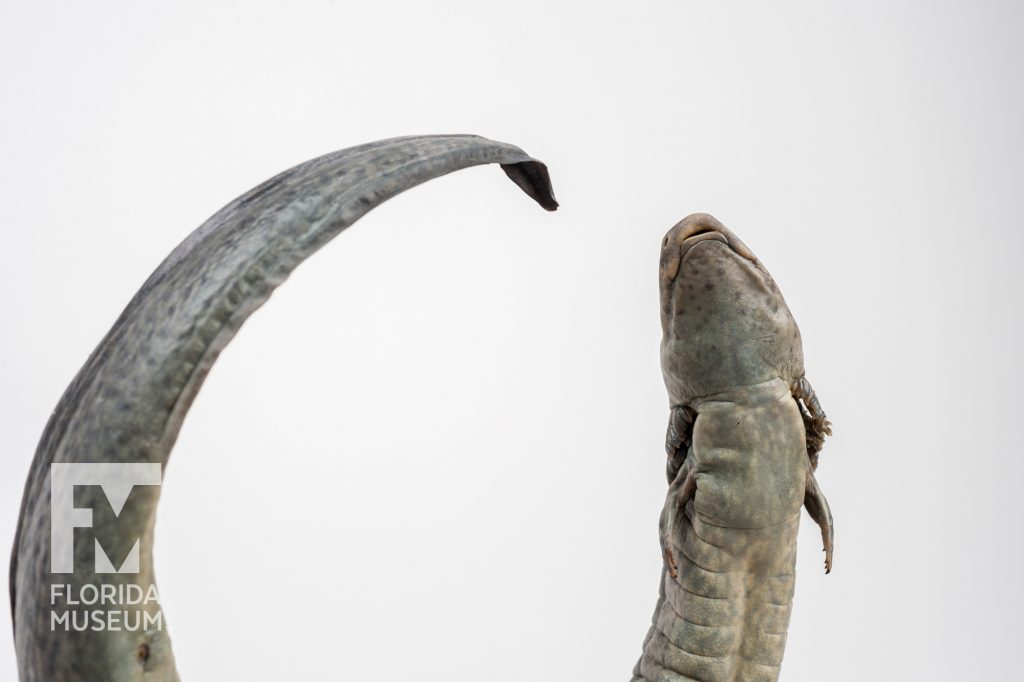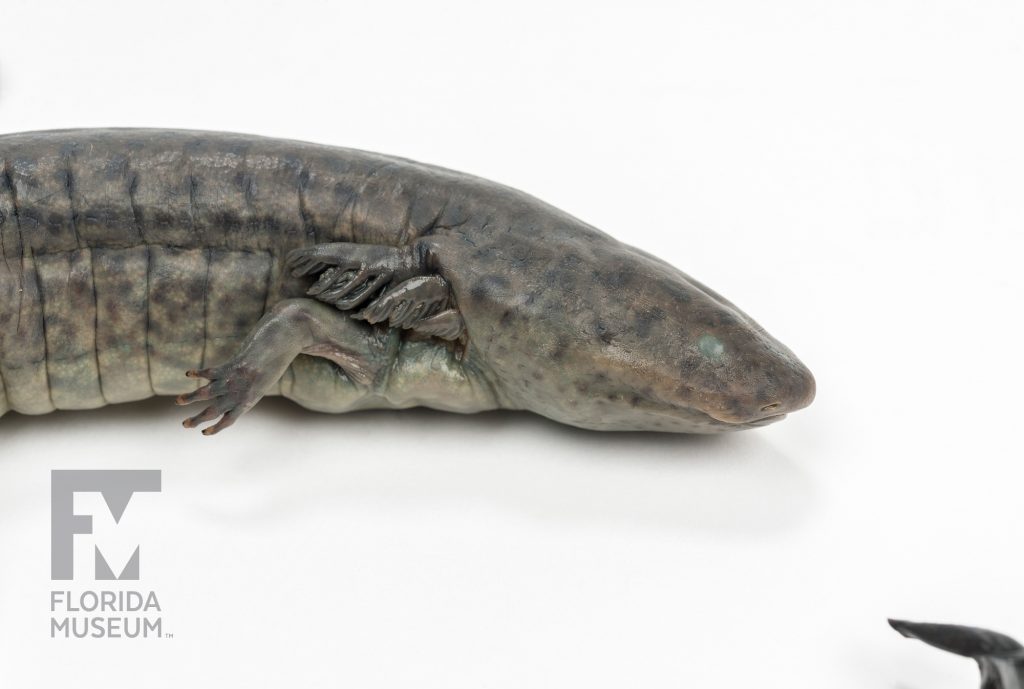Florida hosts all four known species of sirens, a strange aquatic family of salamanders. With frilly gills for breathing underwater and no hind legs, these salamanders live in ponds, lakes and weedy ditches and can grow up to 3 feet.
Summary
Greater Siren (Siren lacertina)
From St. Johns River, Florida, Dec. 2000
Collection
Story
Pretend for a moment you are a Greater Siren, one of the world’s largest salamanders, and your pond is drying up. What do you do? Luckily you have secret super powers to help you survive. As the water draws down, you burrow into the wet soil, curl up into an “S” shape and build a cocoon out of dead cells to withstand the dry conditions. While you do have feathery gills at the base of your head to breathe underwater, you can also breathe air directly through your skin and large lungs. Your body functions slow down and you can last long periods without eating until the water returns.
Pretty handy, huh? Sirens of all sizes have this ability. Larvae, which are less than an inch long at hatching, can survive months like this. Adults grow to over 3 feet long and can weather droughts for years.
Kirsten Hecht
Graduate Student, Herpetology*
University of Florida
Exhibit
On display Sept. 23, 2017-Jan. 7, 2018, Rare, Beautiful & Fascinating: 100 Years @FloridaMuseum celebrated the Museum’s rich history. Each Museum collection was asked to contribute its most interesting items and share the stories that make them special. Though the physical exhibit is closed, this companion website remains online, providing an opportunity to experience the Florida Museum’s most treasured specimens.
Exhibit Area: Objects Tell Stories
Theme: Surprising Biodiversity
 Want to see more? Explore more than 300 breathtaking color photos of plants, animals, fossils and cultural heritage materials from the Florida Museum of Natural History’s collections in the award-winning book All Things Beautiful available from the University Press of Florida.
Want to see more? Explore more than 300 breathtaking color photos of plants, animals, fossils and cultural heritage materials from the Florida Museum of Natural History’s collections in the award-winning book All Things Beautiful available from the University Press of Florida.
*This title was accurate at the time the exhibit was on display in 2017. Please visit the collection website to verify current staff and student information.


